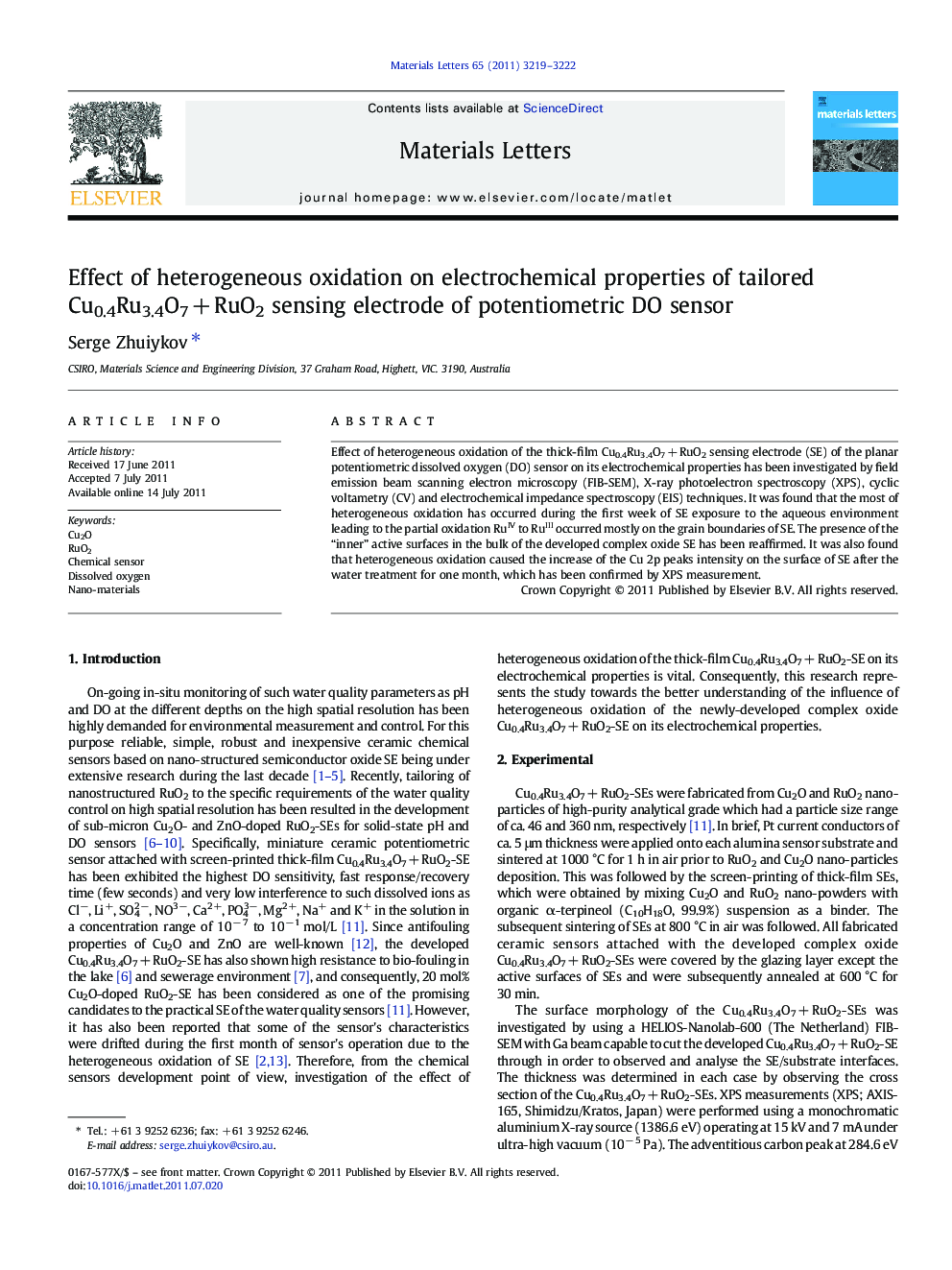| Article ID | Journal | Published Year | Pages | File Type |
|---|---|---|---|---|
| 1647654 | Materials Letters | 2011 | 4 Pages |
Abstract
Effect of heterogeneous oxidation of the thick-film Cu0.4Ru3.4O7Â +Â RuO2 sensing electrode (SE) of the planar potentiometric dissolved oxygen (DO) sensor on its electrochemical properties has been investigated by field emission beam scanning electron microscopy (FIB-SEM), X-ray photoelectron spectroscopy (XPS), cyclic voltametry (CV) and electrochemical impedance spectroscopy (EIS) techniques. It was found that the most of heterogeneous oxidation has occurred during the first week of SE exposure to the aqueous environment leading to the partial oxidation RuIV to RuIII occurred mostly on the grain boundaries of SE. The presence of the “inner” active surfaces in the bulk of the developed complex oxide SE has been reaffirmed. It was also found that heterogeneous oxidation caused the increase of the Cu 2p peaks intensity on the surface of SE after the water treatment for one month, which has been confirmed by XPS measurement.
Related Topics
Physical Sciences and Engineering
Materials Science
Nanotechnology
Authors
Serge Zhuiykov,
